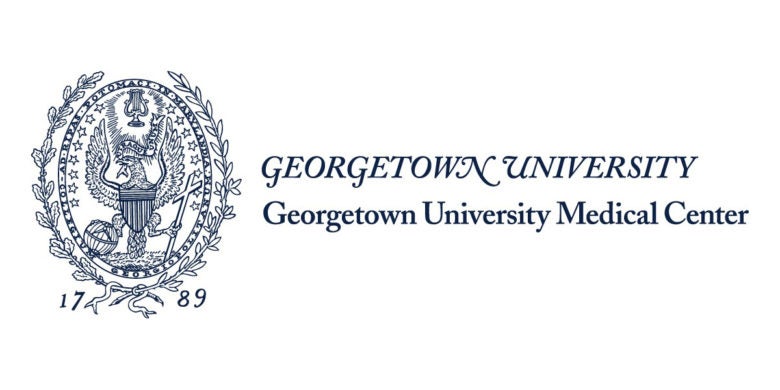As Vaping Increased in Popularity, Use of Cigarettes Declined

Posted in News Release | Tagged cancer, e-cigarettes, smoking, vaping
MEDIA CONTACT:
Karen Teber
km463@georgetown.edu
WASHINGTON (November 20, 2018) — A comprehensive analysis examining the relationship between vaping and smoking among youth and young adults finds that cigarette smoking dramatically decreased between 2013 and 2017 just as e-cigarette use became more popular.
The study, published in the journal Tobacco Control, looked at five different U.S. population-level surveys that covered the four year time frame — the time during which vaping became increasingly popular.
“We found a strong and consistent inverse relationship between vaping and smoking across the different datasets for both youth and young adults,” says the study’s senior author, David Levy, PhD, professor of oncology at Georgetown Lombardi Comprehensive Cancer Center.
“This finding is important because it indicates the country experienced a major reduction in youth and young adult cigarette smoking when vaping became more popular,” he says.
Other studies, including one released in 2018 by the National Academy of Sciences, did not reach such a robust finding because they relied on one survey that covered a shorter span of time, Levy says.
Data on youth and young adult cigarette use was obtained from five different large-scale national surveys: the Monitoring the Future (MTF) Survey, the National Youth Tobacco Survey, the Youth Risk Behavior Survey, the National Survey of Drug Use and Health, and the National Health Interview Survey. These surveys asked about vaping, some as early as 2011, and they indicate that vaping occurred at relatively low levels from 2011-2013, but at much higher levels by 2014.
“We see that 2014 was a tipping point year when vaping became popular, and cigarette use then declines much more rapidly than in previous years,” Levy says.
For example, trend analysis using the Monitoring the Future survey for 12th graders indicates a long-term annual relative reduction in (any last 30 day) smoking prevalence of 4.6 percent with an additional 9.5 percent annual reduction during the 2014-2017 vaping period, yielding a total annual relative reduction in smoking prevalence of 14.1 percent during the vaping period. In addition, the same or greater relative reductions were observed for more established smoking, such as daily or half-pack-a-day smoking.
“The data paints a consistent picture of accelerated reductions in youth and young adult smoking prevalence as vaping becomes more widespread,” Levy says. “Vaping has had a positive effect on reducing cigarette smoking. On a population level, any effect that vaping may have had as a gateway to cigarette smoking during the time frame examined appears to be small relative to the effects of vaping leading to less smoking,” Levy says.
He points out that the surveys used in this analysis were before the popularity of Juul, a different and popular type of vaping device. Juul uses “nicotine salts” that both have stronger nicotine content and are less harsh than vape from traditional e-cigarettes.
“We need to continue to study the use of e-cigarettes, including Juul, with the goal of reducing harmful cigarette smoking but also to prevent underage youth from using any nicotine delivery system, especially cigarettes,” Levy says.
Study co-authors include Kenneth E. Warner, PhD, University of Michigan; K. Michael Cummings, PhD, MPH, Medical University of South Carolina; David Hammond, PhD, University of Waterloo, Ontario, Canada; Charlene Kuo, MPH, Georgetown Lombardi Comprehensive Cancer Center; Geoffrey T. Fong, PhD, FSRC, FCAHS, Ontario Institute for Cancer Research, Toronto, Canada; James F. Thrasher, PhD, MS, MA, University of South Carolina; Ron Borland, PhD, from Australia Cancer Control, Victoria, Australia; Maciej L. Goniewicz, PharmD, PhD, from Roswell Park Cancer Institute in Buffalo, New York.
Goniewicz reports receiving a research grant and served as an advisory board member to pharmaceutical companies that manufacture smoking cessation medications; Cummings and Hammond have served as an expert witness in litigation against the cigarette industry.
Funding for the study came from National Cancer Institute grant P01CA200512. Fong was supported the Canadian Institutes of Health Research (FDN-148477) and a Senior Investigator Grant from the Ontario Institute for Cancer Research.
About Georgetown Lombardi Comprehensive Cancer Center
Georgetown Lombardi Comprehensive Cancer Center is designated by the National Cancer Institute (NCI) as a comprehensive cancer center. A part of Georgetown University Medical Center, Georgetown Lombardi is the only comprehensive cancer center in the Washington, D.C., area. It serves as the research engine for MedStar Health, Georgetown University’s clinical partner. Georgetown Lombardi is also an NCI-recognized consortium with John Theurer Cancer Center/Hackensack Meridian Health in New Jersey. The consortium reflects an integrated cancer research enterprise with scientists and clinicians from both locations. Georgetown Lombardi seeks to improve the diagnosis, treatment and prevention of cancer through innovative basic, translational and clinical research, patient care, community education and outreach to service communities throughout the Washington region and northern New Jersey. Connect with Georgetown Lombardi on Facebook (Facebook.com/GeorgetownLombardi) and Twitter (@LombardiCancer). Georgetown Lombardi is supported in part by a National Cancer Institute Cancer Center Support Grant (#P30CA051008).
About Georgetown University Medical Center
Georgetown University Medical Center (GUMC) is an internationally recognized academic health and science center with a four-part mission of research, teaching, service and patient care (through MedStar Health). GUMC’s mission is carried out with a strong emphasis on public service and a dedication to the Catholic, Jesuit principle of cura personalis — or “care of the whole person.” The Medical Center includes the School of Medicine and the School of Nursing & Health Studies, both nationally ranked; Georgetown Lombardi Comprehensive Cancer Center, designated as a comprehensive cancer center by the National Cancer Institute; and the Biomedical Graduate Research Organization, which accounts for the majority of externally funded research at GUMC including a Clinical and Translational Science Award from the National Institutes of Health. Connect with GUMC on Facebook (Facebook.com/GUMCUpdate) and Twitter (@gumedcenter). Connect with Georgetown University School of Medicine on Facebook (Facebook.com/somgeorgetown), Twitter (@gumedicine) and Instagram (@GeorgetownMedicine).
